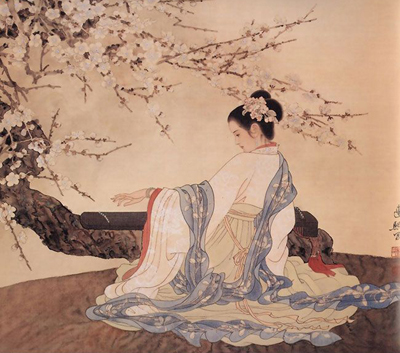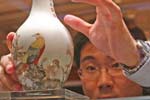Art
Top ten famous traditional Chinese music pieces
Updated: 2011-03-25 15:47
(chinaculture.org)
 |
Also called Plum Blossom Prelude or Jade Imperial Concubine Prelude, Plum Blossom Melodies is more popular in the versions of flute music and guqin music. With plum blossoms as its theme, the music sings of persons with high moral integrity through depiction of the undaunted and indomitable character of plum blossoms that burst into bloom in defiance of the ferocious cold frost, chilling gales and drifting snowflakes.
Originally in the form of flute music called Plum Blossom Music, whose music score was first recorded in Mysterious Music Scores compiled in the Ming Dynasty (1368-1644), it was a flute music played by Huan Yin, the famous general of the Eastern Jin Dynasty (317-420). Later the music was transformed into guqin version, Plum Blossom Melodies.
At that time Wang Huizhi, the son of the great calligrapher Wang Xizhi, was known for his unrestrained character and eerie behaviors. Once, Wang Huizhi went to the capital by boat. He moored his boat at a dock. At this time Huan Yin happened to pass by on the shore. Wang Huizhi sent his messenger to pass word to Huan Yin, informing him of Wang Huizhi’s desire to hear him play the flute. Already a high official, Huan Yin immediately dismounted from his carriage and boarded the boat when he got to know that it was Wang Huizhi who lodged the request. After the performance he mounted his carriage and departed. In the whole process there was no exchange of greetings. And from this incident we may feel that people in the Eastern Jin Dynasty were not trammeled by etiquettes and that they conducted affairs in an upright and open manner.
The first six of the ten-section music constitute the first part, in which the second, fourth and sixth sections repeat the first theme, exhibiting the static beauty of plum blossoms. The three variations in this part give the music its name of Sannong (Plum Blossom Melody in Three Variations). This arrangement elicits the effect of repeated chanting. The last four sections form the second part of the music, which portrays, with hurried rhythm and violent ups and downs, the plum blossoms dancing in the wind. The ninth section repeats the theme of the first part in vigorous and strong melody. The last section follows with slowed tempo and lingering sound, eliciting lingering aftertaste.
Elegant in style, Plum Blossom Melodies is favored by people for its sharp musical images and special methods of representation. It has been the most widely spread classic Chinese instrumental music.
E-paper

Green light
F1 sponsors expect lucrative returns from Shanghai pit stop
Buying into the romance
Born to fly
Light of hope
Specials

Share your China stories!
Foreign readers are invited to share your China stories.

No more Mr. Bad Guy
Italian actor plans to smash ‘foreign devil’ myth and become the first white kungfu star made in China.

Art auctions
China accounted for 33% of global fine art sales.
